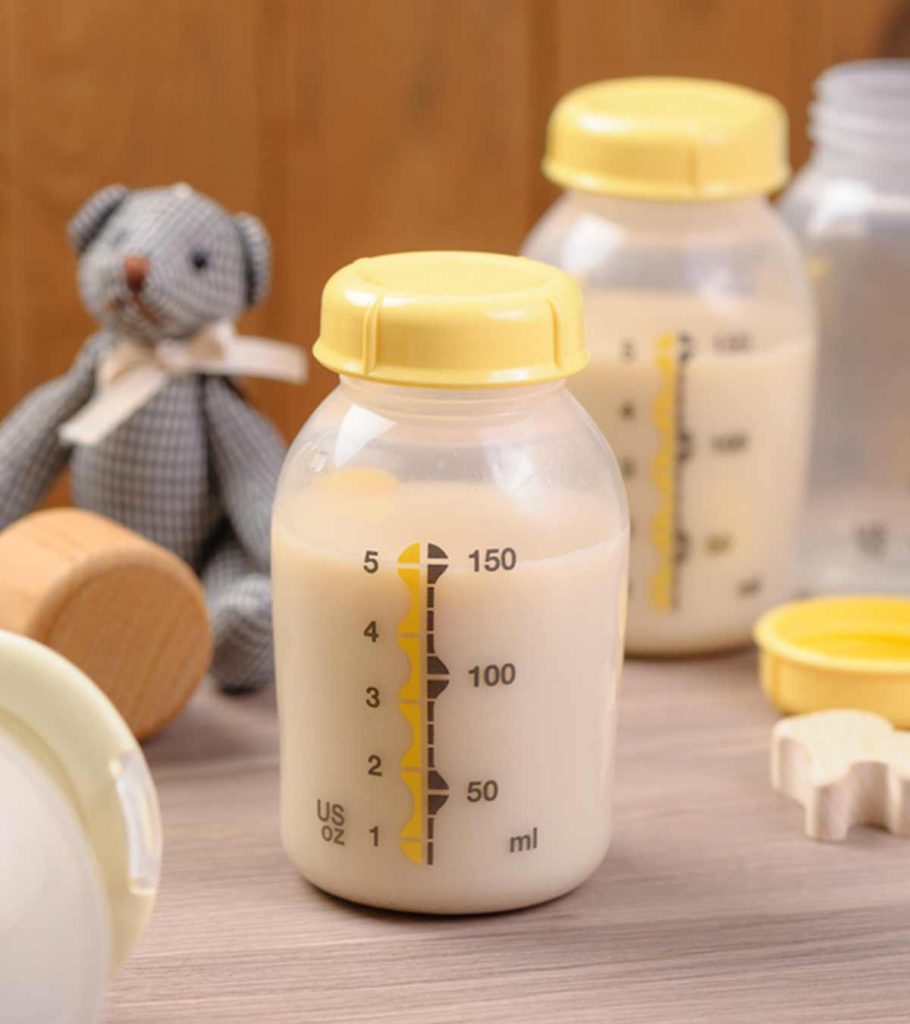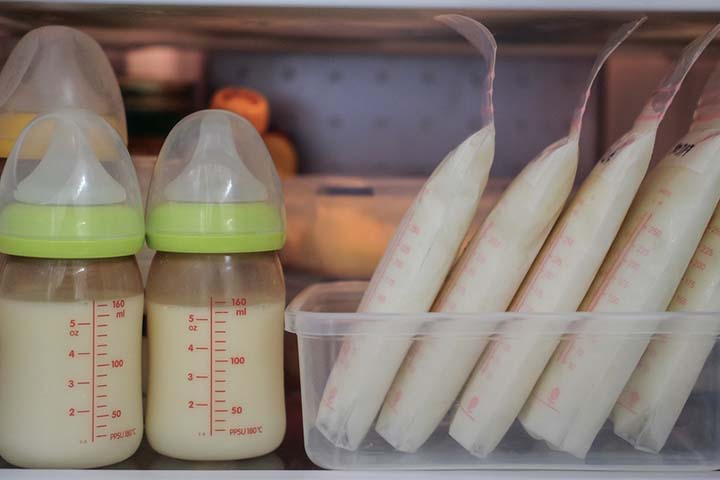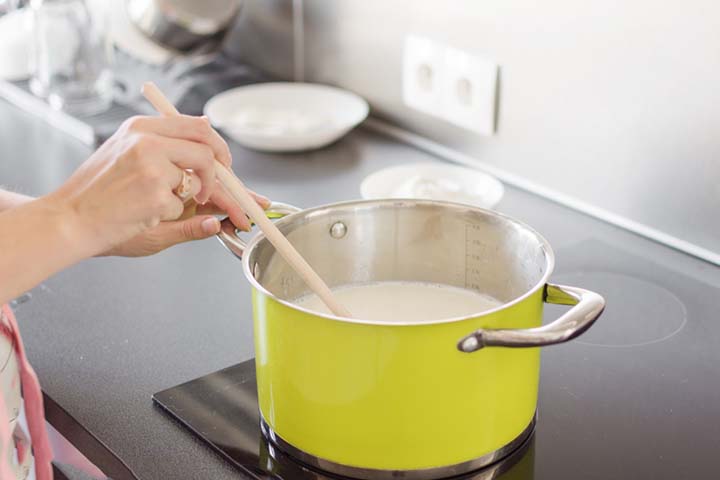Lipase is a naturally occurring enzyme in breast milk that helps hydrolyze milk fat into easily digestible and absorbable fatty acids. The cause for high lipase in the breast milk of only some mothers is unknown. Expressed and stored breast milk is believed to have higher lipase levels.
High lipase levels in breast milk can make it smell and taste off and soapy. These changes may be why some babies refuse to breastfeed or bottle-feed expressed breast milk. Parents may also feel apprehensive about these changes and worry if the expressed milk is safe for the babies. Read to learn more about the causes of high lipase milk, the impacts of lipase activity on breast milk, and ways to manage it.
Causes Of High Lipase In Breast Milk
There’s no evident cause as to why breast milk could develop high lipase content. It’s simply the case that some mothers have excess lipase in their breast milk while others don’t. Lipase is an enzyme in breast milk that facilitates digestion and absorption of nutrients, especially fats.
Stored expressed breast milk is believed to have high lipase levels that hasten the milk breakdown, altering milk’s taste and smell (1). Even then, some mothers report no change in their milk’s smell or taste. In either case, properly stored breast milk is safe, and its off smell and flavor don’t indicate it is unfit for the baby.
Does High Lipase Milk Affect The Baby’s Health?
No clinical evidence demonstrates the short- or long-term effects of high lipase breast milk on an infant’s health. There are no known adverse effects, as well. The changes in the flavor and taste of stored milk happen due to lipolysis, (2).
It could mean that these changes are favorable for your baby. In fact, a study showed that lipase in breast milk could compensate for pancreatic lipase functions during infancy, helping in healthy growth, particularly in preterm infants (3). If you still don’t find your breast milk smell or taste appropriate, check your breast pump parts, storage containers, and consult a pediatrician. You may also consider avoiding strong-smelling foods, such as garlic and fish.
Can You Test Lipase In Breast Milk, At Home?
Although lipase activity in breast milk is a normal activity, if you wish to determine it, you can do it right at home with the following steps.
- Express some breast milk, store it in a suitable container, and freeze or refrigerate. You may taste a small quantity of milk to determine its flavor and odor before storing it.
- Let the container stay in the freezer or refrigerator for one to two days.
- After the stipulated time, check the odor and taste. If the milk smells and tastes off or soapy, it is highly likely that your breast milk has a high lipase content.
Brittany Mederos, a mother of one, shares how she discovered that her breast milk has high lipase content. She explains, “While I was out, my husband thawed some breast milk and prepped it for our little one. He noticed it smelled funny but didn’t think much of it until our baby wouldn’t take the bottle. Then he tasted it, which tasted ‘soapy and weird, not like fresh breast milk.’ After a ton of searching online forums and blogs, I finally narrowed it down. I had overactive lipase in my milk. Some babies don’t mind the smell or taste, but my baby girl did… and now I was stuck with my return to work date looming and a milk stash that potentially my baby couldn’t use! (i).”
If your milk has high lipase content and your baby refuses to feed, you may try some interventions. If your baby is over six months old, you may want to try non-dairy alternatives, such as plant-based milk. These options may be more suitable, and better tolerated than traditional dairy products.
Tips To Mask Off Breast Milk Smell And Flavor
Here are some steps to resolve your milk’s smell and taste due to high lipase activity.
- Note the time as to when the milk turns sour and smells off. Following this timeline will help determine the approximate time when your stored milk changes flavors due to lipase activity. In most cases, the shift in the milk’s taste occurs after 24 hours of storage. So, pump and store milk accordingly to avoid milk wastage.
- Try scalding. According to lactation experts, scalding fresh expressed milk before storing can deactivate lipase. Scalding milk involves heating it until it just begins bubbling around the edges and not boiling (4). Boiling milk isn’t advisable as it can destroy the essential nutrients. Experts suggest heating breast milk in a pan below 180°F (82.2°C).
- Mix stored milk with freshly expressed milk or solids. You can mix stored milk with freshly expressed milk to mask its flavor before serving it to the baby. However, ensure both are at the same temperature. For older babies who consume breast milk along with solids, you can add solids to breast milk. Oatmeal and infant cereals are some safe foods that you can add to breast milk.
Other than these measures, altering breast pumps speed and pressure might also help prevent changes in breast milk’s taste and smell. You may also ensure that the breast pump and its parts are sterile to prevent bacterial contamination, which could also alter breast milk’s taste and flavor.
Breast milk is an essential source of nourishment for babies. Its taste and smell are factors that affect the baby’s appetite. A baby might stop feeding stored breast milk due to specific changes. However, adequately stored milk’s soapy taste and smell is the safest option, provided the cause is high lipase activity and not something else. If you are concerned about the possible cause of the milk’s soapy flavor, you must get in touch with a healthcare professional who could perhaps provide better guidance.
Key Pointers
- Lipase is an enzyme in breast milk that metabolizes fats into easily absorbable fatty acids. Some mothers produce milk with excess lipase. Expressed and stored breast milk is also believed to have higher lipase levels.
- High lipase in breast milk can make the milk taste and smell off or soapy, which is why some babies may refuse to take the feed.
- No studies showed that high lipase milk has any adverse effects on the baby’s health. Instead, a study highlighted that high lipase in breast milk could help healthy growth, particularly in preterm infants, by possibly compensating for pancreatic lipase functions.
- Parents can try some tips to mask the off taste and flavor of the high lipase breast milk and encourage the baby to feed.
Learn about the impact of high lipase levels in breastmilk and discover effective ways to manage it. Gain valuable knowledge and practical methods to decrease lipase, improving your ability to use stored breastmilk for feeding your baby.













